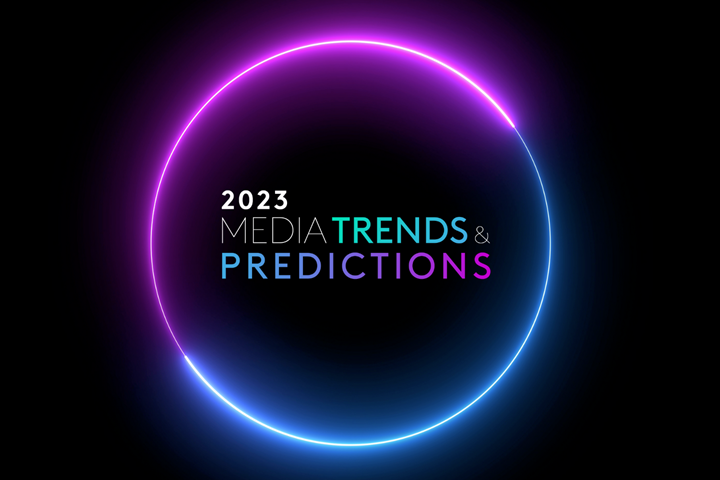When considering the future of media-focused technology, it’s always important to look past the hype and assess where audiences are migrating and what kinds of inventory are available. Based on that criteria, there’s one technology that piques my interest: CTV (Connected TV), which witnessed a surge in growth throughout the pandemic when people were locked indoors with more exposure to IP-based devices.
Consequently, we’re now reaching the tipping point in Smart TV penetration and usage, with consumers increasingly using their TV to stream content directly, connecting via apps and inbuilt IP services.
Indeed, data from Kantar’s ComTech tracking study shows that across the EU5 markets (France, Germany, Great Britain, Italy and Spain), 64% of households own a Smart TV, and in Brazil, connected TV penetration has more than doubled in just four years to 57% of homes in 2021.
Smart TVs are not only being used, but they’re also increasingly the preferred screens for viewing streamed content: across the US, Germany and UK, 88% of video streamers used their TV to access content in December 2021. As video delivery moves towards an all-IP future, Smart TVs will have a critical role to play as the main entertainment gateway into the home.
Now, following in the footsteps of platforms such as HBO Max, which launched its ad-supported option in June 2021, the market will soon have similar propositions from Netflix and Disney+. I think this will be huge, and the industry has every reason to be excited.
Firstly, it opens up inventory in a market crying out for further supply, with ad-supported VOD providing a landing spot for linear TV viewers who either don’t want to pay as much for subscriptions, or simply want to start watching their favourite networks’ programmes online.
Secondly, the technology itself offers the chance to layer more interesting opportunities over a well-defined and contextually easy-to-understand format, combining linear advertising’s impact with online advertising’s enhanced targeting tools.
Nearly 75% of all US broadcast network shows have some form of product placement, targeting those viewers difficult to reach through conventional advertising forms.
And dynamic product placement – enabling a product, billboard or screen featured in content to be substituted or overlaid with a different brand or advert – is also growing. Like addressable advertising, different viewers could – with the right data – be shown tailored ads.
However, technological possibilities will need to be balanced against what’s acceptable to viewers. Negative impact may be inadvertently achieved if a placement is clearly out of place, anachronistic or jarring. It will also need to be more closely regulated in terms of disclosure to viewers that the content has been tailored.
Furthermore, only verified buyers can operate within the market, and currently levels of collaboration and openness to third-party measurement are high, signalling that trust, quality and privacy are paramount.
There’s also the ability to get more granular when mapping to audiences, or mapping ad exposures to results, which will help boost advertising effectiveness.
However, that’s not to say there are no risks ahead. I don’t want to see the industry adopt familiar bad habits, such as low-quality creatives, uncapped frequencies, or an obsession with performance at the expense of brand building.
It will also be important to work together to ensure frictionless workflows, given the complexity of the market and the different platforms and devices that make it up.
2023 should therefore be a time to experiment, test and learn. And the sooner all players do so, the sooner we can enjoy CTV’s unique and extensive capabilities.
Discover more on what we believe is next for the media and marketing industry by downloading our latest Media Trends & Predictions Report.
Consequently, we’re now reaching the tipping point in Smart TV penetration and usage, with consumers increasingly using their TV to stream content directly, connecting via apps and inbuilt IP services.
Indeed, data from Kantar’s ComTech tracking study shows that across the EU5 markets (France, Germany, Great Britain, Italy and Spain), 64% of households own a Smart TV, and in Brazil, connected TV penetration has more than doubled in just four years to 57% of homes in 2021.
Smart TVs are not only being used, but they’re also increasingly the preferred screens for viewing streamed content: across the US, Germany and UK, 88% of video streamers used their TV to access content in December 2021. As video delivery moves towards an all-IP future, Smart TVs will have a critical role to play as the main entertainment gateway into the home.
Enhanced continuity
With linear-broadcast audiences migrating towards on-demand viewing in such numbers, CTV looks increasingly attractive, particularly because there’s a sense of continuity – it’s much the same as the status quo, yet enhanced.Now, following in the footsteps of platforms such as HBO Max, which launched its ad-supported option in June 2021, the market will soon have similar propositions from Netflix and Disney+. I think this will be huge, and the industry has every reason to be excited.
Firstly, it opens up inventory in a market crying out for further supply, with ad-supported VOD providing a landing spot for linear TV viewers who either don’t want to pay as much for subscriptions, or simply want to start watching their favourite networks’ programmes online.
Secondly, the technology itself offers the chance to layer more interesting opportunities over a well-defined and contextually easy-to-understand format, combining linear advertising’s impact with online advertising’s enhanced targeting tools.
Nearly 75% of all US broadcast network shows have some form of product placement, targeting those viewers difficult to reach through conventional advertising forms.
And dynamic product placement – enabling a product, billboard or screen featured in content to be substituted or overlaid with a different brand or advert – is also growing. Like addressable advertising, different viewers could – with the right data – be shown tailored ads.
However, technological possibilities will need to be balanced against what’s acceptable to viewers. Negative impact may be inadvertently achieved if a placement is clearly out of place, anachronistic or jarring. It will also need to be more closely regulated in terms of disclosure to viewers that the content has been tailored.
Unprecedented automation and measurement
Indeed, CTV allows advertisers to reach targeted audiences through programmatic technology, bringing with it levels of automation and measurement not seen before in the TV market.Furthermore, only verified buyers can operate within the market, and currently levels of collaboration and openness to third-party measurement are high, signalling that trust, quality and privacy are paramount.
There’s also the ability to get more granular when mapping to audiences, or mapping ad exposures to results, which will help boost advertising effectiveness.
However, that’s not to say there are no risks ahead. I don’t want to see the industry adopt familiar bad habits, such as low-quality creatives, uncapped frequencies, or an obsession with performance at the expense of brand building.
A technological opportunity
CTV is a technological opportunity to improve the ad experience for everyone – audiences, marketers and media owners – and we should be united in our efforts working towards this goal.It will also be important to work together to ensure frictionless workflows, given the complexity of the market and the different platforms and devices that make it up.
2023 should therefore be a time to experiment, test and learn. And the sooner all players do so, the sooner we can enjoy CTV’s unique and extensive capabilities.
Discover more on what we believe is next for the media and marketing industry by downloading our latest Media Trends & Predictions Report.


